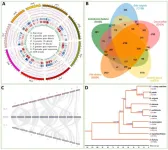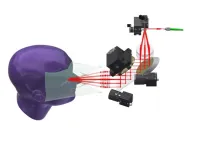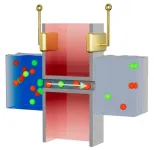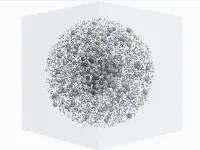Early puberty for most children does not have an obvious cause. Sometimes it is due to genetics, or there is a problem in the brain, such as an injury or tumour, or in the thyroid, adrenal or sex glands. In recent years, several studies have reported increases in early puberty onset for both girls and boys, particularly during the COVID-19 pandemic. One factor may be the increased use of blue light-emitting devices, but this is very difficult to assess in children.
In this study, researchers from the Ankara Bilkent City Hospital and Gazi University in Turkey examined 18 male rats aged 21-days-old, divided into three groups of six and exposed to either a normal light cycle, to six hours or 12 hours of blue light. The researchers found that the first signs of puberty occurred significantly earlier in male rats exposed to blue light. Additionally, the longer the rats were exposed to blue light, the earlier their puberty started, while they also showed suppressed sperm development and damaged testicular tissue.
A previous study from the same group has also shown an earlier onset of puberty in female rats due to blue light exposure. However, this association has never been studied in male rats before. “For the first time, we found a direct relationship between blue light exposure and early puberty in male rats,” said lead researcher Dr Aylin Kılınç Uğurlu from Ankara Bikent City Hospital. “Our findings align with our previous work on female rats, which also showed similar effects, thereby providing a more comprehensive view of how blue light may influence puberty in both male and female rats.”
While the findings suggest that blue light exposure could potentially be a risk factor for earlier puberty onset, more research is needed. “I want to emphasise that this is a rat study and direct results cannot be interpreted for humans. However, we provide an experimental foundation to further investigate the health consequences of ever-increasing screen time in modern society,” said Dr Kılınç Uğurlu.
The researchers will next focus on assessing the impact of blue light exposure before puberty in adult rats. “We aim to expose both male and female rats to blue light before puberty and understand its long-term effects on reproductive organ damage and fertility,” said Dr Kılınç Uğurlu. “Ultimately, this research could lead to preventative measures and contribute to the ongoing discourse on how modern lifestyles affect physiological development and long-term health.”
The results of this study were also recently published in Frontiers in Endocrinology.
--------ENDS-------
FC13.6
Effects of Blue Light Exposure and Exposure Duration on Male Rats Puberty Process
Aylin KILINÇ UĞURLU1, Aysun BİDECİ2, Ayşe Mürşide DEMİREL3, Gülnur Take KAPLANOĞLU4, Duygu DAYANIR4, Özlem GÜLBAHAR5, Tuba Saadet DEVECİ BULUT5, Esra DÖĞER2, M.Orhun ÇAMURDAN2
1Ankara Bilkent City Hospital, Pediatric Endocrinology Clinic, Ankara, Turkey. 2Gazi University Faculty of Medicine, Department of Pediatric Endocrinology, Ankara, Turkey. 3Gazi University Faculty of Pharmacy, Department of Basic Pharmaceutical Sciences Faculty of Pharmacy, Laboratory Animals Breeding and Experimental Research Center, Ankara, Turkey. 4Gazi University Faculty of Medicine, Department of Histology and Embryology, Ankara, Turkey. 5Gazi University Faculty of Medicine, Department of Medical Biochemistry, Ankara, Turkey
Abstract
Purpose: Our study aimed to examine the effects of blue light exposure on prepubertal male rats’ puberty and testis tissue.
Methods: Eighteen 21-day-old male Sprague Dawley rats were divided into three groups consisting of six rats in each group: Control Group (CG), Blue Light-6 hours (BL-6), and Blue Light-12 hours (BL-12). CG rats were maintained with 12/12-hour light-dark cycles. The rats of BL-6 and BL-12 were exposed to blue light (450–470nm, irradiance level 0.03uW/cm2) for 6 hours and 12 hours, respectively. Rats were exposed to blue light until the first signs of puberty. The ELISA method was used to analyze the serum concentrations of FSH, LH, testosterone, DHEA-S, leptin, ghrelin, melatonin, glutathione, glutathione peroxidase, and malondialdehyde. Testes were dissected for histomorphological examination.
Results: The medians of the pubertal entry days of the CG, BL-6, and BL-12 were 38th, 30th, and 28th days, respectively (p: 0.001). The age of onset of puberty decreased as the duration of blue light exposure increased (r: -0.97, p<0.001).Weight gain (%) was similar between the groups (p>0.05). Leptin concentrations were lower in BL-12 compared to BL-6 (p: 0.003). There was no correlation between weight gain (%) and leptin (p>0.05), although serum leptin concentrations decreased as the onset of puberty progressed earlier (r: 0.53, p: 0.02). Ghrelin concentrations in the groups were similar (p>0.05).The FSH, LH, and testosterone concentrations of all groups were similar (p>0.05). The FSH concentration increased as the LH concentration increased (r: 0.82, p: 0.001). The LH concentration increased as serum testosterone, and DHEAS decreased, respectively (r:-0.56, p:0.01),(r:-0.55 p:0.01). Testicular lengths and weights of the BL groups were smaller compared to CG (p=0.03),(p=0.04). GPx was higher for BL-6 and BL-12 than the CG (p:0.02, p:0.02). Testis tissue was compatible with the pubertal period in all groups. As the blue light exposure time increased, spermatogenesis was suppressed, and capillary dilatation and edema in the testis tissue increased.
Conclusion: In our study, exposure to blue light accelerated the onset of puberty in male rats. When the length of exposure to blue light increased, the onset of puberty occurred earlier. To the best of our knowledge, this study is the first to demonstrate the effects of blue light exposure on male rats' puberty onset. The blue light exposure suppressed spermatogenesis, marked vasodilatation in the interstitial area of the testis, and disrupted the integrity of the basement membrane. These findings intensified with increasing exposure time.
Notes for Editors:
For press enquiries, or to arrange an interview with the study authors, please contact the ESPE 2023 press office:
Joanna Williams
Communications Executive
Mob: +44 (0) 7876 842 027
Email: joanna.williams@endocrinology.org
The study “Effects of Blue Light Exposure and Exposure Duration on Male Rats Puberty Process” will be presented on Saturday 23 September 2023 at the 61st Annual Meeting of the European Society for Paediatric Endocrinology (ESPE 2023) at the World Forum in The Hague, Netherlands.
The 61st Annual Meeting of the European Society for Paediatric Endocrinology is held at the World Forum in The Hague, Netherlands, on 21-23 September 2023. This year's theme is “Global Challenges in Paediatric Endocrinology”. See the full scientific programme here.
The European Society for Paediatric Endocrinology (ESPE) is a truly international organisation aiming to improve the clinical care of children and adolescents with endocrine conditions, including diabetes, through research and education. END






